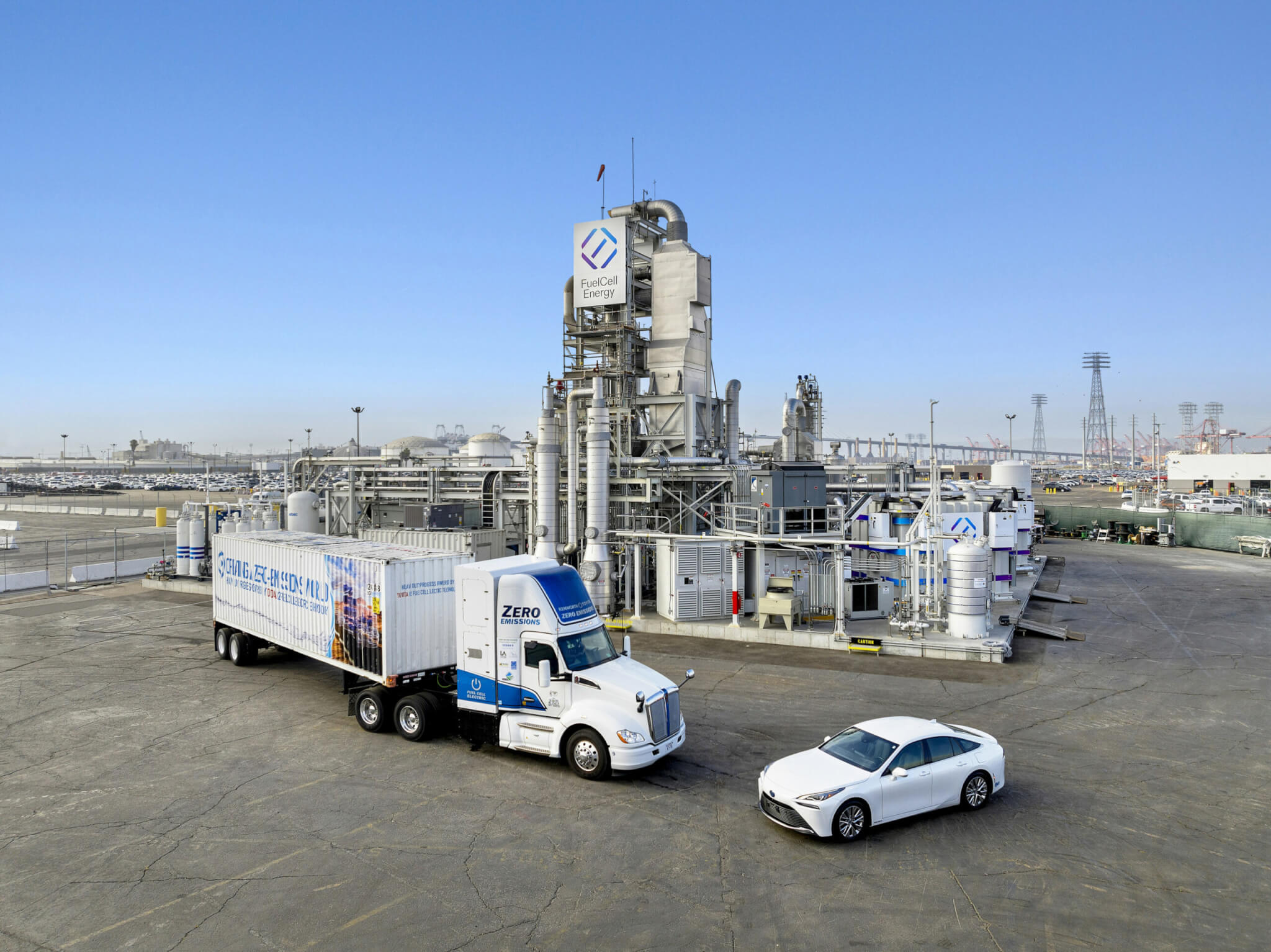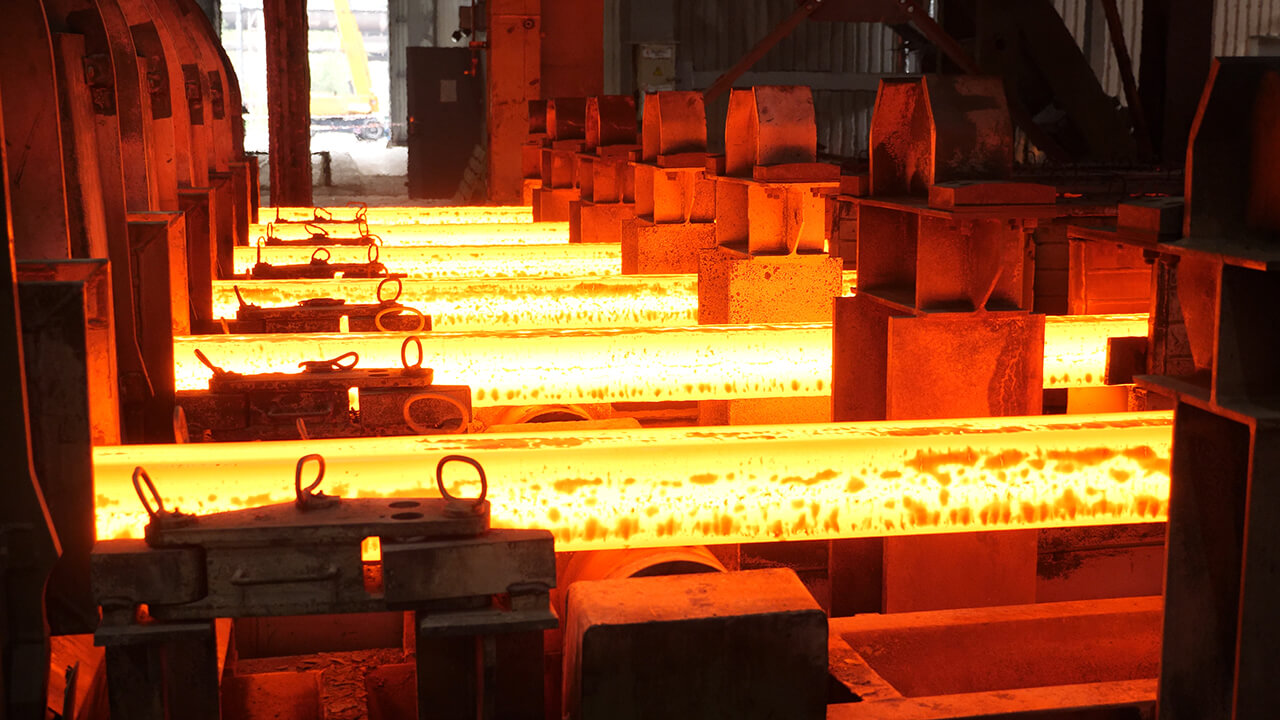After seventy years of existence, the Chinese automotive industry has become a major force in the global automotive market. Since 2012, China has been the world’s largest car producer and its lead is growing. In 2022, the country will produce 27 million motor vehicles (including nearly 24 million passenger cars), nearly triple the number produced in the United States.
This summer, China marked 70 years since the beginning of the country’s automotive industry – on 15 July 1953, the construction of China’s first automobile factory, or First Automobile Works, the forerunner of the FAW Group, began in Changchun in the northeastern Chinese province of Jilin.
Since no one in China knew how to make cars at that time, significant help came from engineers from the Soviet Union. After three years of preparation and trial production, the first Jiefang CA-10 truck rolled off the assembly line on July 13, 1956. It was actually a Soviet ZIS-150. At that time, workers made the doors, roof and other body parts with hammers.
The first passenger car made in China rolled out of the FAW plant in 1958. The Hongqi (Red Banner) CA72 luxury sedan was a copy of the American Chrysler. These vehicles were mainly used by the Communist elite in ceremonies and military parades.
On the day of the 70th anniversary celebrations, a car with the serial number 55,770,000 rolled off the production line of the smart factory in Changchun, staffed by hundreds of robots and operated by fully autonomous supply trucks. “We have overcome many challenges, introduced a number of competitive products and made solid strides in scientific and technological self-sufficiency. The number of our R&D staff has grown to more than 4,500, and the development cycle of new cars has been shortened from 48 to 24 months,” said Qiu Xiandong, FAW Group CEO, at the commemoration event.

On the day of FAW’s 70th anniversary celebration, a car with the serial number 55,770,000 rolled off the production line in Changchun. | Photo: PR newswire
Joint ventures
The FAW Group has become the embodiment of the development of the Chinese auto industry. It belongs to the so-called Big Four Chinese state-owned or municipal-owned giants along with SAIC Motor, Dongfeng Motor and Chang’an Automobile. All of these companies are also part of joint ventures with global automakers, which allow them to produce their cars in China.
In doing so, each of these four companies has several often competing partners, and conversely, foreign carmakers usually have several cooperating manufacturers in China. SAIC Motor, for example, has joint ventures with its biggest competitors, Volkswagen and General Motors, which have been fighting for many years for market leadership in China. At the same time, Volkswagen also has a joint venture with the FAW Group, it also cooperates with other Chinese carmakers and recently even acquired an equity stake in the Xpeng car company.
Similarly, other established major manufacturers such as Guangzhou Automobile Group (GAC), Beijing Automotive Group (BAIC), Chery, Jianghuai (JAC) and privately owned companies such as BYD (Built Your Dreams), Geely, Great Wall (GWM), Brilliance Automotive and Seres have joint ventures with global automakers. These have been joined in recent years by a number of new manufacturers such as Li, Nio, Xpeng, Hozon, Leapmotor and Aito in the promotion of electromobility.
“30.6 million vehicles is the estimate for sales in China in 2030, according to AlixPartners.”
The clarity of the Chinese market is complicated by the fact that Chinese companies are continuously creating many new brands targeting different customer groups. Another peculiarity is that most passenger car manufacturers also produce trucks and buses at the same time.
A unique position in the Chinese car industry is occupied by the private company Zhejiang Geely Holding Group, founded and owned by the Chinese billionaire Li Shufu. He describes himself as a ‘communist poet’. Although Geely is only the seventh largest car manufacturer in China, it has gradually gained control of Volvo Cars, Polestar, Proton, Lotus and London taxi manufacturer LEVC. It also created the car company Lynk & Co. and is co-owner of the Smart brand. It is also a shareholder in the German Daimler group, which includes Mercedes-Benz, and a shareholder in Aston Martin. Most recently, Geely has formed a joint venture with Renault to produce internal combustion engine powertrains.
Operating system from Huawei
A specific feature of the Chinese automotive industry is its cooperation with technology companies. The position of Huawei Technologies is quite unique. It sells electric cars of its own design under the Aito brand, but does not manufacture any. Its production is outsourced to the established automakers Chery, BAIC, Anhui JAG and Seres. It has also recently launched a luxury car brand, Luxeed, in conjunction with Chery.
In addition, its Huawei Intelligent Automotive Solution division supplies many carmakers with the HarmohyOS operating system with a proprietary processor providing 5G communications, helping them rank as the absolute world leader in the use of assistance, communication and information systems.
Huawei has also worked with a number of global automakers (including Volkswagen), but they have had to abandon the use of its technology following the imposition of US sanctions on the company.
How a superpower was born
China’s dominant position in the automotive industry can be attributed to its high production capacity. The country of more than 1.4 billion people has the advantage of a large, ever-hungry market, which allows it to achieve economies of mass production and thus competitive prices. The Communist government has also invested heavily in infrastructure and technology, which, combined with high tariffs on imported cars, has allowed China’s automotive industry to develop rapidly.
As recently as 1985, only 5,200 cars were produced in the country and private ownership of cars was virtually impossible. Cars were mainly imported from the Soviet Union. But in the mid-1980s, things began to change. In 1984, major imports from Japan began, and just a year earlier, the American company AMC (then owned by Renault) signed a 20-year contract to build Jeep vehicles in Beijing. But the real boom in car production in China came with the arrival of Volkswagen, which in 1985 signed a 25-year contract to build passenger cars in Shanghai. Peugeot came in right behind with another project in Guangzhou.
Foreign car companies began to build production plants in China as part of joint ventures – initially for assembly from imported components, but eventually major suppliers began to arrive and production of complete cars developed rapidly in cooperation with Western companies. Know-how began to flow into China from all over the world. Subsequently, development centres began to open in the country and experts from all over the world came to work there.
The rapid development of Chinese technology companies has helped domestic manufacturers to apply cutting-edge technology to their cars. New Chinese models come standard with advanced features such as driver assistance and information and communication systems, including voice-activated controls, parking assistants, wireless phone charging, advanced air filtration, solar panels and the ability to do many activities directly from the car.
Local brands in the lead and consolidation on the horizon
For the past four decades, the Chinese car market has been dominated by established global brands such as Volkswagen, Buick (GM) and Toyota, which operate in joint ventures with Chinese partners. However, competitive pricing, faster launches of new models using state-of-the-art technology and the rise of domestic EV manufacturers such as BYD, Nio and Xpeng Motors have changed the market dynamics.
However, competitive pricing, faster launches of new models using state-of-the-art technologies and the rise of domestic EV manufacturers such as BYD, Nio and Xpeng Motors have changed the market dynamics. AlixPartners forecasts that total car sales in China will grow by three per cent this year to 24.9 million vehicles, returning to pre-Covid-19 levels. It predicts growth to 30.6 million vehicles by 2030, when it estimates that more than half of the vehicles sold in China will be electric vehicles. Other analysts, such as Bloomberg, estimate this share of EVs to be even much higher.
Chinese EV makers have also made a name for themselves by focusing on features such as advanced driver assistance systems, even in cheaper cars. And they clearly dominate the use of the most advanced information and communication systems. Since new car buyers in China are on average much younger than elsewhere in the world, they can appreciate and demand these latest technologies. This focus on cutting-edge technology has given Chinese-made cars a head start in the global market compared to much more conservative Western production. It will also cause Chinese carmakers to increasingly erode the position of the world’s established carmakers in the years to come.
“It would be best for foreign brands to learn from China’s new start-up EV makers if they want to survive in China,” said Stephen Dyer, who heads AlixPartners’ automotive advisory business in Asia.
The Chinese market is struggling with huge overcapacity. Stephen Dyer therefore predicts a wave of consolidation. According to Dyer, only 25 to 30 of the 167 current NEV (New Energy Vehicles, clean electric vehicles and plug-in hybrids) brands may survive by 2030. More than two-thirds of these brands recorded no sales last year, he said.
“A big wave of consolidation is expected in the automotive industry.”
The Chinese market, which accounts for nearly 30 percent of global car sales, is by far the largest in the world, with sales spread across more than 1,000 models. Consequently, there is little concentration among them and the market share of the best sellers is just above two per cent. In the ranking of the best-selling cars in China by May 2023, BYD dominates the Top 10 with four models in the Top 10, of which the Qin Plus moved up six places with 162,077 new registrations (+48.4%), while the Dolphin and Yuan Plus improved by more than 100 percent.

The global headquarters of BYD Auto (Build Your Dreams) in Shenzhen, South China. | Photo: Businesswire
Expansion overseas
The combination of a large domestic market and large production capacity has enabled China to compete effectively in the global export market. The Chinese automotive industry has begun to focus seriously on overseas expansion, and Chinese companies are strengthening their sales and distribution networks in all regions of the world, including Asia Pacific, Africa, the Middle East, Russia and Latin America – markets from which many Western brands have withdrawn in the last decade. In Mexico, for example, the Chinese brands BAIC, JMC, JAC, MG, Changan, BYD, Chery, Omoda and Jaecoo will reach a market share of more than 20 percent in 2022, making China the second largest automotive supplier there after the United States.
In recent years, China’s automotive industry has been working hard to shed its long-standing image as a supplier of low-tech, low-margin, low residual value vehicles, thanks in large part to the significant progress its domestic brands have made in the connected electric vehicle segment.
Chinese vehicles are increasingly sought after around the world for their affordability, reliability and innovative features. Emerging brands such as Nio, XPeng and Li Auto, which are increasingly competing with Tesla, have played an important role in improving the image of the Chinese automotive industry worldwide, including in the Chinese domestic market.
In 2022, according to China Central Administration of Customs (CGAC), automobile exports grew by a remarkable 57 percent year-on-year to reach $44.7 billion. 3.32 million cars were exported. Earlier this year, China’s automotive industry marked another major milestone when it overtook Japan as the world’s largest vehicle exporter. According to data released by the China Association of Automobile Manufacturers (CAAM), exports rose to 1.76 million vehicles in the first five months of 2023, mainly due to strong growth in overseas demand for NEVs. According to the association, NEV exports rose 163 percent to 457,000 units in the five months, with significant growth in Europe.
SAIC Motor, China’s largest vehicle manufacturing group, which has significant joint ventures with GM and Volkswagen, is also the country’s largest exporter. In the first five months of the year, it posted a 48 percent increase in overseas sales to 438,455 units, of which about 59,000 were produced abroad. FAW Group has chosen developed regions abroad as its target market and opened sales channels in 17 countries, including Saudi Arabia and Norway. Other key Chinese domestic exporters include Chery Auto, which sold 300,000 vehicles abroad in five months, many of which were assembled abroad, Changan Auto with 150,000 vehicles, Geely with 90,000, Great Wall Motors with 88,000 and Dongfeng with 80,000.
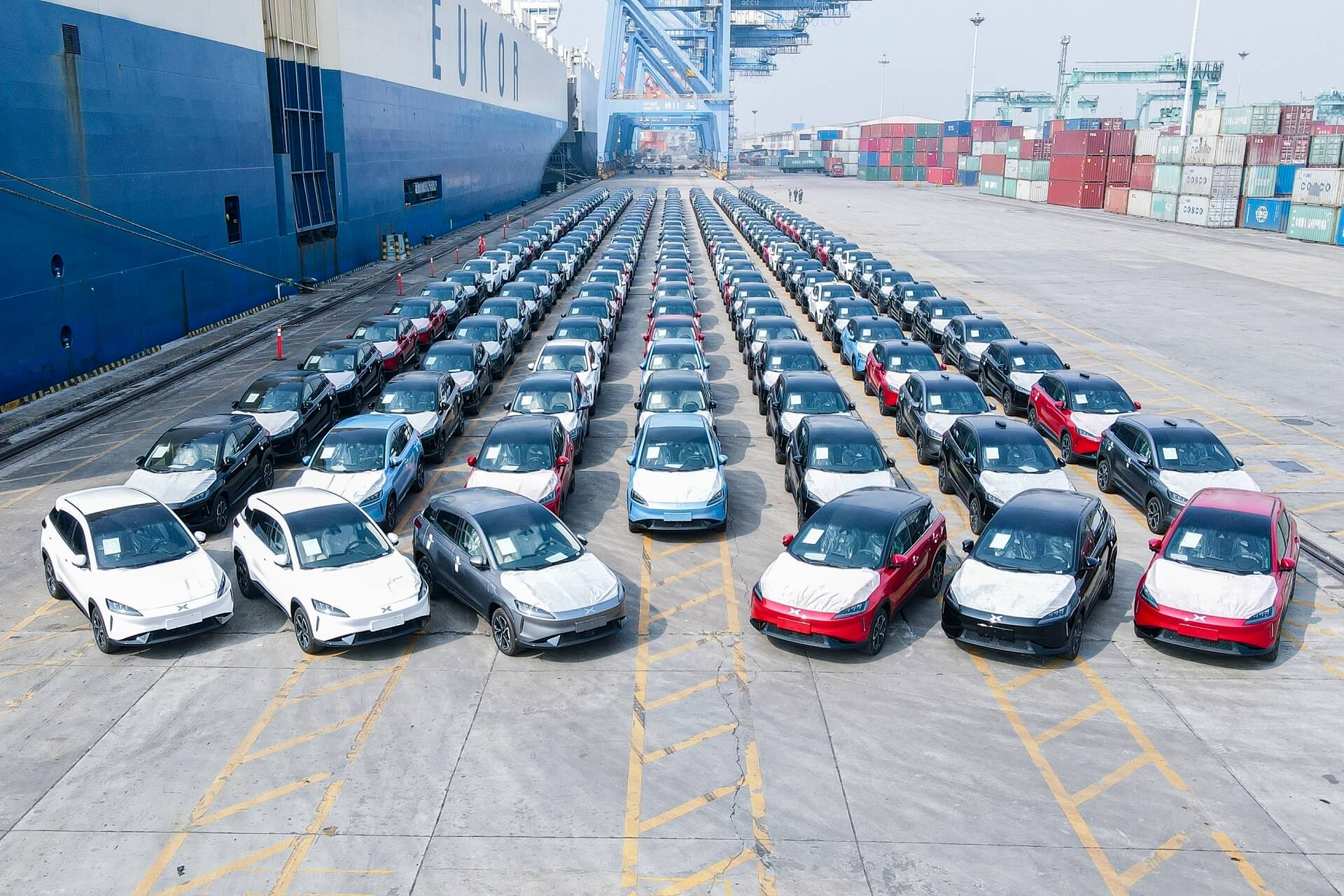
Xpeng G3 ready for export to Norway. | Photo: PR Newswire
Stephen Dyer of AlixPartners has predicted that annual sales of Chinese-brand cars in foreign markets will rise to nine million vehicles by 2030. That would give Chinese brands 30 percent of the global market share, 15 percent of the market share in Europe, 19 percent in South America and 19 percent in Southeast and South Asia.
Foreign brands are also expected to play a significant role in the explosive growth of Chinese automotive exports over the next decade. Already, Tesla is the second-largest exporter, having increased shipments abroad from its Shanghai plant by 69 percent to 163,000 vehicles since the start of the year.
In contrast, Chinese automakers are expanding their plans to build factories abroad as part of an effort to accelerate the course of globalization of their brands. “Setting up factories overseas can help Chinese automakers that have seen some sales in local markets to cut costs, operate across the industrial chain and provide more localized branded products,” said Shi Yebin, a research fellow at the Zhongding Research Institute.
Attack on the European market
According to the European Automobile Manufacturers Association ACEA, China became the largest exporter of vehicles to the European Union last year ahead of Turkey and the UK, and its shipments continue to grow significantly this year.
Although Chinese brands continue to play a relatively small role in terms of market share, they have made significant progress, with registrations jumping from 66,100 units in 2021 to 152,400 units in 2022. A large part of the sales are attributable to vehicles designed and manufactured by Chinese company SAIC under the MG brand, which saw a 116 percent increase in volume to nearly 114,000 units, outpacing brands such as Jeep and Honda in European sales.

Legendary British MG cars produced by SAIC at this year’s Festival of Speed at Goodwood. | Photo: Newspress
Italy’s DR Automobiles, which sells renamed Chinese Chery cars in Spain and Italy, outperformed Smart and Subaru with a 197 percent increase in registrations to nearly 25,000 units. MG and DR cars accounted for 91 per cent of the registration volume of all Chinese brands in the EU. But BYD, Hongqi, Maxus, Nio, DFSK and Aiways have already registered more than 1,000 units each last year.
Chinese electroshock
The hectic development of the automobile has brought about a major deterioration of air quality in China’s major cities. Therefore, the Chinese leadership has announced a plan to promote NEVs. As a result, 20 Chinese electric vehicles were already on display at the 2010 Beijing Motor Show. In the same year, battery manufacturer BYD launched China’s first plug-in hybrid F3DM, the all-electric e6 minivan and the K9 electric bus. By 2016, NEV sales had already surpassed the half-million mark, and China became the world leader in electric vehicle production and sales.
At present, China has the largest EV market and industry in the world, the strongest EV supply chain, and significant research and development activities are underway in the country. Consumers can choose from hundreds of models offered in a wide price range in virtually all segments, including the cheapest minicars.
According to the China Passenger Car Manufacturers Association (CPCA), NEV sales in China reached 6.9 million units in 2022, more than half of all vehicles of this type sold worldwide. This was an 84 percent year-on-year increase. NEVs thus accounted for almost a quarter of all passenger cars sold in China, a much higher proportion than in the US (where it was one in seven cars) or the EU (where it was only one in eight new cars). Yet the pace of EV development continues to accelerate. In the first five months of 2023, NEV sales rose another 47 percent year-on-year to 2.9 million units.
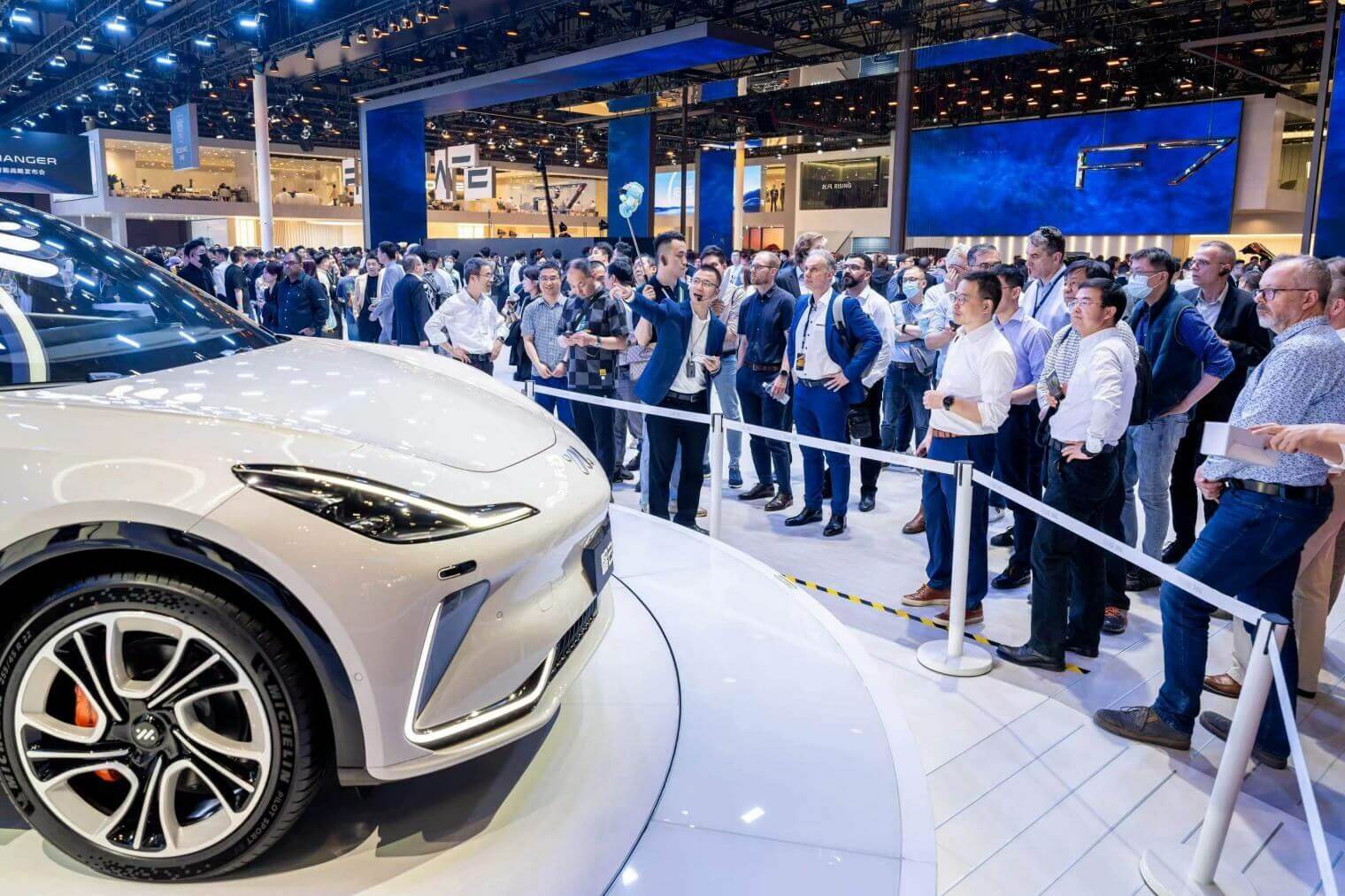
As the world’s largest automotive technology show this year, this year’s Shanghai Auto Show confirmed the leading position of the Chinese automotive industry. | Photo: Asianet News
The NEV category in China also recently marked a significant anniversary. On July 3, the 20 millionth NEV produced in China rolled off the production line in Guangzhou, the capital of Guangdong province. The first NEV was produced in China in 1995. Reaching the milestone of 20 million NEVs shows the remarkable pace of development and incredible technical progress in China’s automotive industry.
The 20-millionth NEV was the Aion Hyper GT electric sedan, produced at GAC’s intelligent manufacturing base in Guangzhou, China. It is a typical example of the current level of Chinese automotive technology. It was unveiled at last year’s Guangzhou Motor Show and is sold in five versions with a range of 560 km, 600 km or 710 km. The AEP 3.0 platform enables 480 kW fast charging as well as battery swapping technology in two minutes.
“NEVs are the main direction for the transformation, modernisation and green development of the global automotive industry. They are also a strategic choice for the high-quality development of China’s automotive sector,” said Xin Guobin, Vice Minister of Industry and Information Technology, at the ceremony marking the production of the NEV anniversary car.
Generous support
China has begun to implement policies to promote the sale of electric vehicles, initially through generous incentives for customers. The program, which ran for ten years, reimbursed EV buyers with a subsidy of up to 60,000 yuan (US$8,375). Although the national subsidies ended in 2022, local governments in cities such as Shanghai continue to provide rebates of up to 10,000 yuan.
The standard excise tax of 10 per cent has been abolished for net car purchases costing up to 300 thousand yuan (US$42 thousand) by 2025, which will then be five per cent in 2026 and 2027. The total tax breaks, which have been in place since 2014, are estimated to reach 835 billion yuan (about $117 billion) by the end of 2027. In the US, the Inflation Reduction Act, which was passed last year, includes tax incentives for electric vehicle purchases and clean manufacturing of $270 billion and loans for clean energy projects of $12 billion.
Direct government support for EV manufacturers has helped many of them to start operations. Although there were plenty of companies that filled the market with more than 500 brands of EVs in 2019, government efforts mainly boosted the success of large companies, especially BYD.
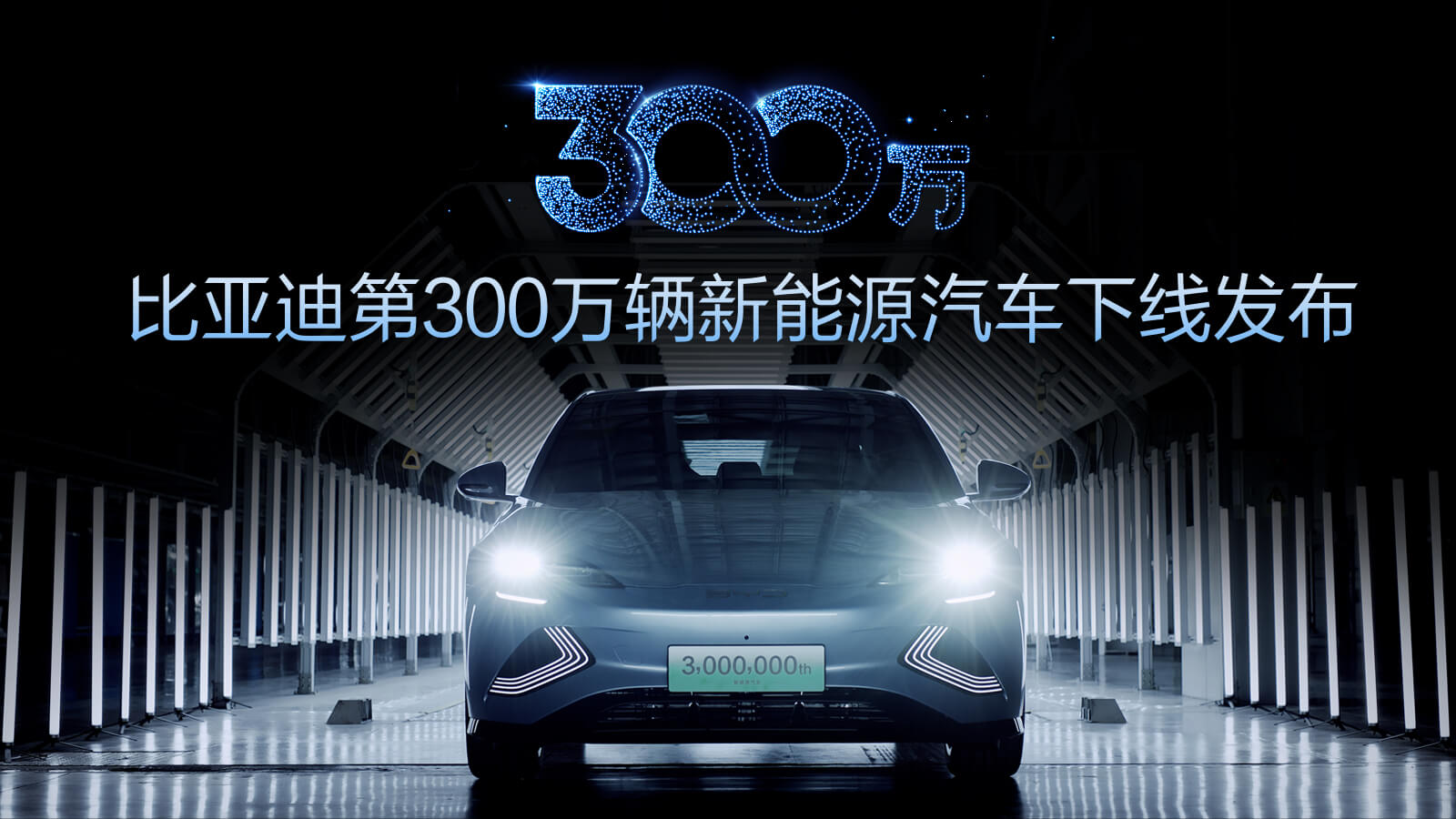
BYD is a pioneer in the NEV category, having celebrated the production of its three millionth vehicle last November: Businesswire
Some local governments have converted their public transport and taxi fleets to 100% electric and encouraged local authorities to purchase electric or plug-in hybrid vehicles. The result has been steady business for electric vehicle manufacturers.
Buying and owning gasoline-powered cars is becoming less appealing to consumers. Cities are fighting congestion by limiting the number of cars through measures such as lotteries or auctions for new license plates. Last year in Shanghai, plates sold at auction for an average of 92,780 yuan. Drivers of electric cars can easily get green license plates, and green plates are increasingly seen on the city’s streets.
China introduced a rating system for the automotive industry in 2017 that awards points for NEV production and penalties for cars with high fuel consumption. Automakers with negative scores can even be recalled. To avoid punishment, manufacturers can buy credits from competitors with positive scores, such as Tesla or BYD. But that can get expensive. State-owned Chang’an Automobile thus lost out on a profit of 4,000 yuan (US$560) per car sold in 2020 due to the need to buy credits.
And that’s not all
However, the development of electromobility in the country does not end with the production of electric vehicles, as their deployment also requires sufficient infrastructure. The Chinese government is also subsidising the construction of charging stations, which are widely available, reducing costs and easing drivers’ range anxiety. Thanks to agreements with manufacturers, charging standards are uniform, so everyone uses the same connectors.
China now has the largest network of charging points in the world – there were 6.36 million EV chargers in China at the end of May this year. In 2022 alone, China added 649,000 public charging points, which was more than 70 percent of all installations implemented worldwide. Meanwhile, the entire EU had a total of 450,000 charging points in operation in 2022, according to the International Energy Agency (IEA).
A significant number of charging points are part of the state-owned grid in China, but it is only the fourth largest provider of the service after private companies such as Wanbang New Energy Investment Group and TGood New Energy.
The Chinese automotive industry has achieved remarkable results in a short time, not only in terms of the number of cars, but also in terms of their design and quality. Even though China entered the automotive market much later, it has managed to beat its competitors and become a world leader in this technically extremely demanding sector based on many years of experience. One of its advantages is that, unlike most Western brands, Chinese manufacturers continue to focus on producing affordable vehicles.
By focusing on the use of state-of-the-art technologies, for example, also for the development of autonomous driving, they are shaping the future of the global automotive industry.
Contact
Next articles and interviews
Next articles and interviews
+ Show









